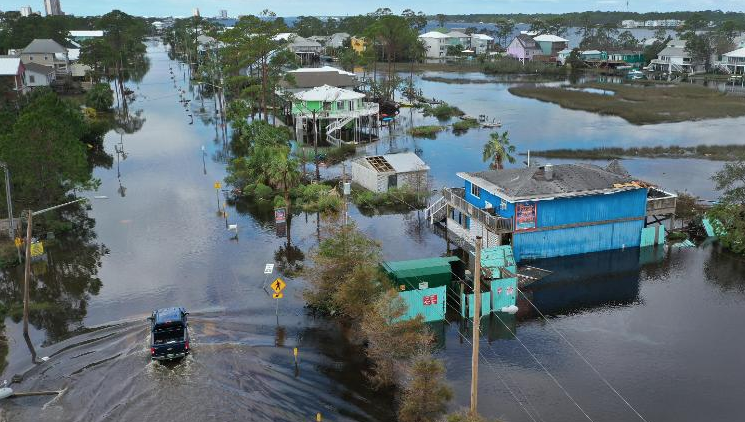(CNN) — A new report provides an alarming forecast for the US: Sea level will rise as much in the next 30 years as it did in the past 100 — increasing the frequency of high-tide flooding, pushing storm surge to the extreme and inundating vulnerable coastal infrastructure with saltwater.
The interagency report, led by the National Oceanic and Atmospheric Administration, shows how scientists are increasingly confident that US coasts will see another 10 to 12 inches of sea level rise by 2050.
The implications of that forecast are enormous.
“This report is a wake-up call for the US, but it’s a wake-up call with a silver lining,” NOAA chief Rick Spinrad said at a news conference on Tuesday. “It provides us with information needed to act now to best position ourselves for the future.”
The projected sea level rise will lead to a significant increase in the frequency of coastal flooding even on sunny days, scientists report. High-tide flood events in coastal cities — New York, Washington, Miami and others — have already doubled in annual frequency since 2000, turning what researchers say used to be a “rare event” into a “disruptive problem.”
Every inch of sea level rise also amplifies hurricane storm surge, coastal erosion and wetland loss — impacts which US coasts are already well familiar with.
“Decades ago, powerful storms were what typically caused coastal flooding,” NOAA reports. Today, due to sea level rise, “even common wind events and seasonal high tides regularly cause [high-tide flooding] within coastal communities, affecting homes and businesses, overloading stormwater and wastewater systems, infiltrating coastal groundwater aquifers with saltwater, and stressing coastal wetlands and estuarine ecosystems.”
The report didn’t set out to quantify how expensive these events would get in the future or how they would impact the economy. But Nicole LeBeof, the director of NOAA’s National Ocean Service, noted that millions of people live along the coast, and the rest rely on products that enter the country through ports on the coast.
“What I will say is that the magnitude of these impacts, direct and cascading, will be high,” LeBeof said at a news conference. “Forty percent of the US population lives within 60 miles of our coastlines. There will be highly variable impacts along those coastlines, but there’s no denying that a large portion of our economy and revenue and tax base are right there, front and center.”
Catastrophic sea level rise
Beyond 2050, the amount of sea level rise the US will experience is highly dependent on how much the world cuts fossil fuel emissions and limits global temperature rise.
Robert Kopp, a climate scientist at Rutgers University and co-author on the report, said sea level rise is becoming “increasingly sensitive to the amount of warming” the planet is experiencing.
Full article on CNN

